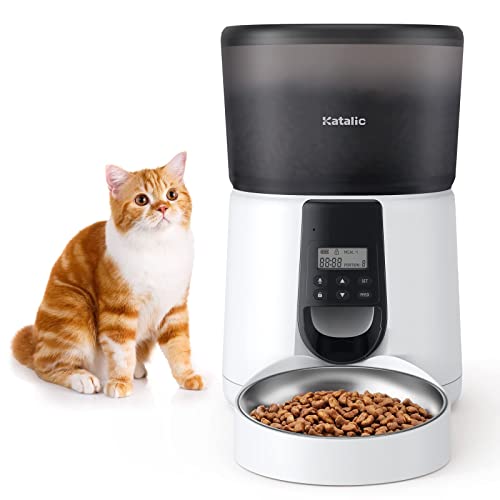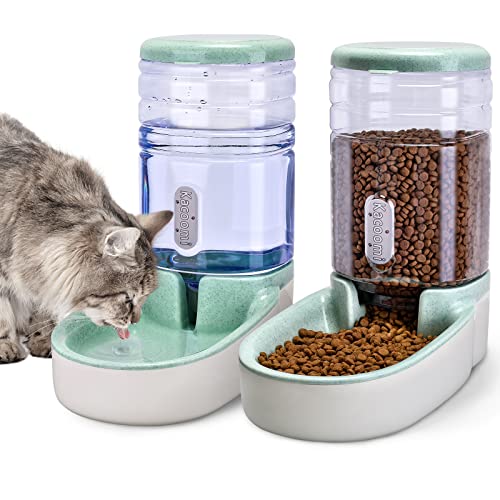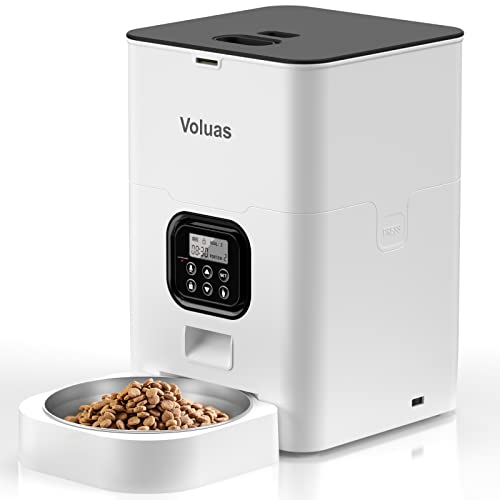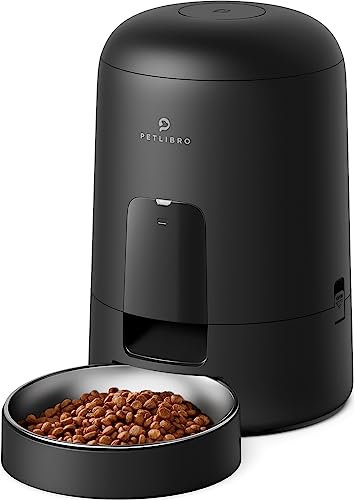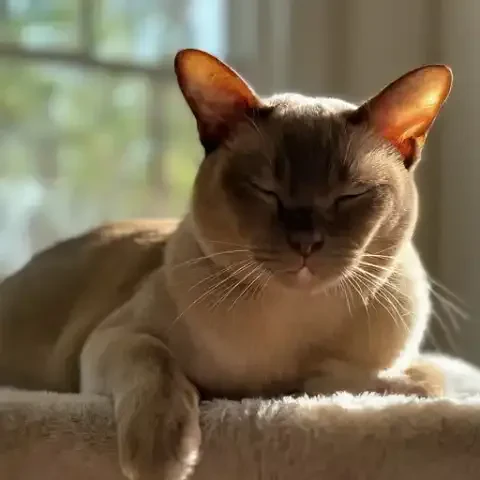Your cat isn't just a pet; they’re family. And like any family member, you want them to live a long, healthy, and happy life, filled with purrs, playful antics, and comforting cuddles. The bond we share with our feline companions is a unique and cherished one, built on mutual affection and understanding. However, ensuring their well-being isn't something that just happens automatically. It requires conscious effort, knowledge, and a proactive approach to their care. Cat health and happiness are intertwined and are a direct reflection of the attention and dedication we provide as their guardians. This article will guide you through a range of essential tips, spanning various aspects of cat care – from the food they eat to the environment they inhabit, ensuring you have the tools and knowledge to help your beloved feline thrive. Let's embark on this journey together, exploring how we can nurture our cats into their healthiest and happiest selves.
Nutrition forms the very foundation of your cat's health, acting as the fuel that powers their body from the inside out. Just like humans, a balanced and nutritious diet is paramount for their energy levels, immune system strength, coat condition, and overall longevity. Choosing the right food can feel overwhelming with the sheer variety available, but understanding your cat's specific nutritional needs is the first step. Start by considering their age. Kittens, with their rapid growth spurts and boundless energy, require food formulated specifically for their needs. Kitten food is typically richer in calories, protein, and essential nutrients to support bone development, muscle growth, and a strong immune system during these crucial early months. Adult cats, on the other hand, need a diet that maintains their weight and energy levels without excessive calorie intake, as obesity can become a significant health concern. Senior cats, often with reduced activity levels and potential age-related health issues, benefit from diets that are lower in calories, easier to digest, and may contain supplements to support joint health and cognitive function.
Navigating the world of cat food labels can seem like deciphering a foreign language, but understanding the basics is crucial for informed choices. Look for high-quality protein sources listed as the primary ingredients – think chicken, fish, or turkey. Be wary of vague terms like "meat meal" without specifying the source. Also, be mindful of fillers and excessive carbohydrates, which cats, being obligate carnivores, don't require in large amounts. Ingredients like corn, wheat, and soy are often used as fillers and can sometimes cause sensitivities in some cats. The debate between wet and dry food is a common one among cat owners. Dry food is convenient, often more economical, and can contribute to dental health in some cats through its chewing action. However, wet food boasts a higher moisture content, which is beneficial for hydration, especially as cats can sometimes be less inclined to drink water directly. Wet food can also be more palatable for some cats, particularly older ones or those with dental issues. Many veterinarians recommend a combination of both wet and dry food to reap the benefits of each. Consider offering dry food for free-feeding throughout the day and supplementing with wet food meals, perhaps once or twice daily.
Just like humans, some cats have special dietary needs. Food allergies or sensitivities are not uncommon, manifesting as skin issues, digestive upset, or ear infections. If you suspect your cat has a food allergy, consult with your veterinarian. They can help you identify potential allergens and recommend hypoallergenic or limited-ingredient diets. Similarly, cats with certain health conditions, such as kidney disease, diabetes, or urinary tract issues, often require prescription diets specifically formulated to manage these conditions. Always follow your veterinarian's guidance when it comes to special dietary needs. Beyond food, fresh water access is non-negotiable. Hydration is vital for all bodily functions, from kidney health to temperature regulation. Ensure your cat always has access to clean, fresh water. Many cats can be finicky drinkers, so offering multiple water sources can be beneficial. Place water bowls in various locations around your home, away from food and litter boxes. Some cats are drawn to moving water, so consider a pet water fountain. These fountains not only encourage drinking but also keep the water oxygenated and fresher. Pay attention to your cat's water intake. A sudden decrease in drinking, or conversely, excessive thirst, can be a sign of an underlying health issue and should be checked by a vet.
Overfeeding is a common pitfall that can lead to obesity, a serious health concern in cats. Obesity significantly increases the risk of diabetes, arthritis, heart disease, and other health problems, ultimately impacting your cat's lifespan and quality of life. Portion control is key. Don't rely on free-feeding alone, where food is always available. Instead, follow the feeding guidelines on your chosen cat food packaging as a starting point, but adjust based on your cat's individual needs, age, activity level, and body condition. Use measuring cups or scales to ensure accurate portions at each meal. Regular weight checks are crucial. You can learn to assess your cat's body condition at home by feeling their ribs and observing their waistline from above. Your veterinarian can also assess your cat's weight during regular checkups and provide guidance on ideal weight and feeding amounts. Treats can be a wonderful way to bond with your cat and reward good behavior, but they should be given in moderation. Choose healthy treats and account for their calories when calculating your cat's daily food intake. Think of treats as occasional indulgences rather than a significant part of their diet.
Veterinary care is not just for when your cat is sick; it’s about proactively managing their health and preventing problems before they arise. Regular wellness exams are the cornerstone of preventative care. Annual checkups are recommended for adult cats, and more frequent visits, perhaps every six months, are ideal for kittens and senior cats. These exams allow your veterinarian to assess your cat's overall health, detect any early signs of illness, and discuss any concerns you may have. During a wellness exam, your vet will typically perform a thorough physical examination, checking their weight, temperature, heart and lung sounds, eyes, ears, teeth, skin, and coat. They will also palpate their abdomen to check for any abnormalities and may recommend blood work or urine tests to screen for underlying health issues, especially in senior cats.
Vaccinations are crucial for protecting your cat from several preventable and potentially life-threatening diseases. Core vaccinations, generally recommended for all cats, include those against feline panleukopenia (feline distemper), feline calicivirus, feline herpesvirus (rhinotracheitis), and rabies. Your veterinarian will determine the appropriate vaccination schedule based on your cat's age, lifestyle, and risk factors. Parasite prevention is another essential aspect of preventative care. Fleas, ticks, heartworms, and intestinal worms are common parasites that can cause discomfort, illness, and even transmit diseases to your cat. Year-round parasite prevention is generally recommended, even for indoor cats, as fleas and ticks can be brought into the home on clothing or other pets. Your veterinarian can recommend the most effective and safe parasite prevention products for your cat, considering their individual needs and lifestyle.
Dental care is often overlooked but plays a significant role in your cat's overall health. Dental disease is incredibly common in cats and can lead to pain, tooth loss, bad breath, and even systemic infections affecting the heart, kidneys, and liver. Regular dental checkups and cleanings performed by your veterinarian are essential for maintaining good oral health. Professional dental cleanings under anesthesia allow for a thorough examination of the teeth and gums, removal of plaque and tartar buildup, and treatment of any dental issues. Home dental care complements professional cleanings. Ideally, daily tooth brushing is the gold standard, but it can be challenging to train a cat to tolerate it. Start slowly and gradually introduce toothbrushing, using cat-specific toothpaste (never human toothpaste, which can be toxic to cats). Dental treats and foods formulated to promote oral health can also be helpful in reducing plaque and tartar accumulation.
Being observant of your cat's behavior and physical condition is key to recognizing signs of illness early on. Cats are masters at masking pain and illness, so subtle changes can be important indicators. Changes in behavior, such as lethargy, hiding more than usual, decreased appetite or thirst, increased vocalization, changes in litter box habits, or a sudden change in personality, should raise a red flag. Physical symptoms like coughing, sneezing, vomiting, diarrhea, constipation, discharge from eyes or nose, skin lesions, lumps or bumps, or difficulty breathing also warrant prompt veterinary attention. Remember, when in doubt, always consult your veterinarian. It's always better to err on the side of caution and seek professional advice if you are concerned about your cat's health. Early detection and treatment can significantly improve outcomes for many feline health issues.
Beyond physical health, creating a happy and stimulating environment is crucial for your cat's overall well-being. For most cats, a safe indoor space is the ideal environment. While some cats enjoy supervised outdoor time, keeping cats indoors significantly reduces their risk of traffic accidents, encounters with predators, exposure to diseases, and getting lost. However, an indoor environment needs to be enriched to cater to their natural instincts. Scratching is a natural and essential behavior for cats, serving multiple purposes: sharpening their claws, stretching their muscles, and marking their territory. Provide a variety of scratching posts and surfaces in different materials and orientations – vertical posts, horizontal scratchers, cardboard scratchers, sisal, carpet, and wood. Experiment to find what your cat prefers and place scratchers in areas where they naturally tend to scratch, such as near sleeping areas or doorways.
Cats are natural climbers and love to explore vertical space. Providing climbing structures like cat trees, shelves, and window perches allows them to satisfy this instinct, observe their surroundings from a high vantage point, and feel more secure. Window views are a source of endless entertainment for indoor cats, offering them a glimpse into the outside world, birdwatching opportunities, and sunbathing spots. Make sure windows are safely accessible with sturdy perches or window seats. Hunting and play are deeply ingrained in a cat's DNA. Interactive play sessions are essential for providing mental and physical stimulation, preventing boredom, and strengthening the bond between you and your cat. Use wand toys, feather toys, laser pointers (used responsibly and not shined directly into eyes), and puzzle feeders to mimic hunting behavior and engage their predatory instincts. Puzzle feeders not only provide mental stimulation but also slow down eating and prevent boredom-related overeating.
Just like humans, cats need comfortable resting places to feel safe and secure. Offer a variety of cozy spots in different locations around your home. Soft beds and blankets in quiet corners, window perches for sunbathing, and enclosed hideaways like cat caves or covered beds provide options for different preferences and moods. Litter box management is a non-negotiable aspect of cat ownership, essential for both hygiene and your cat's comfort. The general rule of thumb for the number of litter boxes is one more than the number of cats in the household. This reduces competition and ensures all cats have readily available, clean litter boxes. Location is also important. Place litter boxes in quiet, accessible areas, away from food and water bowls, and in locations where your cat feels safe and undisturbed. Experiment with different types of litter to find what your cat prefers. Some cats are particular about litter texture, scent, and clumping ability. Unscented, clumping litter is often a good starting point. Regular cleaning is crucial. Scoop solid waste and clumps at least once daily, and ideally twice a day. Completely change the litter and clean the litter box regularly, typically every one to two weeks, depending on the type of litter and number of cats.
Mental and emotional well-being are just as important as physical health for a truly happy cat. Cats, even though they may seem independent at times, thrive on love, attention, and social interaction. Dedicate time each day for playtime, petting, and simply being present with your cat. Learn to read your cat's body language and respect their boundaries. Cats have different personalities and levels of sociability. Some are lap cats who crave constant attention, while others are more independent and prefer shorter, more frequent interactions. Pay attention to their cues – purring, rubbing against you, kneading are signs of contentment and affection. Hissing, flattened ears, twitching tail, or dilated pupils may indicate they are feeling stressed or overwhelmed and need space. Mental stimulation, as mentioned earlier with puzzle feeders and play, is vital for keeping their minds sharp and preventing boredom and related behavioral issues. Introduce new toys, rotate toys regularly to maintain novelty, and consider cat-friendly videos or interactive games.
Routine and predictability are comforting for cats. Establishing a consistent daily routine for feeding times, playtime, grooming, and even quiet time can help them feel secure and reduce stress. Understanding basic cat behavior and communication is key to strengthening your bond and meeting their emotional needs. Learning to interpret cat body language – ear position, tail movements, vocalizations – will give you valuable insights into their mood, needs, and preferences. Addressing stress and anxiety is crucial for a happy cat. Cats can be sensitive to changes in their environment, routine, or household dynamics. Recognizing signs of stress, such as excessive grooming, changes in appetite, hiding, or aggression, is the first step in creating a calming environment. Provide safe retreats, minimize stressors, and consider pheromone diffusers or calming supplements if needed, in consultation with your veterinarian.
Grooming is not just about aesthetics; it's an integral part of maintaining your cat's health and hygiene. Regular grooming offers numerous benefits beyond a shiny coat. It helps prevent mats and tangles, especially in long-haired cats, reduces shedding, stimulates circulation, and strengthens the bond between you and your cat. Brushing frequency depends on your cat's coat type. Short-haired cats benefit from brushing a few times a week, while long-haired cats may require daily brushing to prevent matting. Use brushes designed for cats, and be gentle and patient, making grooming a positive experience. Nail trimming is important to prevent overgrowth, ingrown nails, and scratches. Learn safe nail-trimming techniques or have your veterinarian or groomer show you how. Ear cleaning is generally only needed if your cat's ears appear dirty or have discharge. Use a cat-specific ear cleaning solution and gently clean the outer ear, avoiding inserting anything deep into the ear canal. Bathing is rarely necessary for cats, as they are meticulous groomers themselves. However, if your cat gets into something messy or has a skin condition requiring bathing, use a cat-specific shampoo and make the experience as stress-free as possible.
To further enhance your cat's happiness and well-being, consider these bonus tips. Cat-friendly plants can bring a touch of the outdoors inside safely. Choose non-toxic plants like catnip, cat grass, spider plants, and valerian. Avoid toxic plants like lilies, poinsettias, and azaleas. Puzzle feeders and slow feeders, as mentioned earlier, extend mealtime, provide mental stimulation, and prevent rapid eating and potential digestive issues. Clicker training, often associated with dogs, can be surprisingly fun and mentally stimulating for cats of all ages. Use positive reinforcement with treats and a clicker to teach your cat tricks or basic commands. Finally, consider whether your cat might benefit from a feline companion. For some cats, especially single cats or those who spend a lot of time alone, a compatible feline friend can provide companionship and reduce loneliness. However, carefully consider your cat's personality and introduce new cats slowly and gradually to ensure a harmonious relationship.
In conclusion, providing for your cat's health and happiness is a multifaceted endeavor, encompassing nutrition, veterinary care, environmental enrichment, mental well-being, and grooming. By prioritizing these essential aspects of cat care, you are investing in a long, healthy, and fulfilling life for your beloved feline companion. Remember, a healthy and happy cat is a rewarding companion, enriching your life with their purrs, playful antics, and unwavering affection. Start implementing these essential tips into your cat care routine today, and continue to learn and adapt your care as your cat's needs evolve throughout their life. Your feline friend will thank you with years of companionship, purrs, and happy meows! Embrace the journey of cat ownership and cherish the unique bond you share with your wonderful feline family member.

